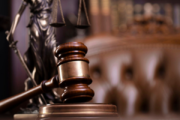Have you ever wondered if individuals with age-related cognitive impairment are aware of their own decline? Do Alzheimer’s patients know they have it? Sometimes they don’t.
A condition called anosognosia can prevent them from understanding the severity of their own diagnosis.
What Is Anosognosia?
Anosognosia, according to StatPearls, a point-of-care and clinical care tool, is “a neurological condition in which the patient is unaware of their neurological deficit or psychiatric condition.”
In other words, this condition means you’re unable to recognize and acknowledge your own health problems. It can be present as a result of several conditions, including:
— Stroke.
— Aneurysm.
— Dementia.
Anosognosia (pronounced uh-naa-suh-now-zhuh) is most commonly seen in Alzheimer’s disease. Although you might hear it referred to as “anosognosia dementia” or “anosognosia Alzheimer’s,” it is solely a symptom that may manifest in these diseases.
Dr. Shaheen Lakhan, a neurologist, researcher and chief medical officer at Click Therapeutics in Boston, says that anosognosia is different than amnesia, which is a lack of memory processing and retrieval. Anosognosia is a lack of awareness that a problem exists. However, amnesia and anosognosia can intersect in disorders like Alzheimer’s disease, especially in later stages.
[SEE: Early Signs of Dementia.]
Causes of Anosognosia
Although experts still aren’t sure of the exact cause of anosognosia, there are two key components in its occurrence:
— Biological factors.
— Psychological factors.
In terms of biological factors, changes occur in the brain as we age, especially in the case of Alzheimer‘s disease. According to Karen D. Sullivan, a board-certified neuropsychologist based out of Pinehurst, North Carolina, these degenerative changes take place in parts of the brain that normally connect self-reflection, error awareness and memory.
The accumulation of amyloid protein deposits in brain regions that control thinking and memory can cause these changes, explains Dr. Gary Small, chair of psychiatry at Hackensack University Medical Center, behavioral health physician-in-chief and the Hovnanian Family Foundation Endowed Chair in Behavioral Health for Hackensack Meridian Health in Edison, New Jersey.
“The condition (anosognosia) can be diagnosed in approximately 40% of patients with mild Alzheimer’s dementia, and its prevalence increases as the disease progresses,” he says.
Lakhan says psychological factors also play a huge role in anosognosia. “Psychologically, humans have a slight preference for positively evaluating ourselves,” she notes. “We are more likely to avoid negative information about ourselves.”
When there is an injury or degeneration to the brain, and it impacts the circuits accountable for catching errors, this can cause a bias for positive self-evaluation.
[READ: New Treatments for Alzheimer’s Disease.]
How Are Alzheimer’s Disease and Anosognosia Diagnosed?
Memory decline is common, says Small, but “if forgetfulness progresses or impairs functioning, then it is important to seek medical advice.”
Some clinicians, like Sullivan, don’t think of anosognosia as its own official diagnosis. Rather, she says, it’s “a neurologically based symptom that happens in the context of a brain disorder.”
Sullivan notes that anosognosia is evaluated by comparing three elements:
— The patient’s responses about their cognition and function in an interview.
— A family member’s responses to the same questions.
— The patient’s performances on valid, comprehensive cognitive testing.
What happens if there is a discrepancy between the patient’s and the family member’s responses? In conjunction with poor cognitive testing results, it may reveal brain degeneration. This could lead a provider to conclude that their patient likely has anosognosia as a symptom of their brain disorder.
While Alzheimer’s disease can be diagnosed through interviews and cognitive testing, an official Alzheimer’s disease evaluation also includes laboratory tests to rule out other diseases and measure degenerative proteins in the brain. Additionally, doctors will usually order brain imaging, such as an MRI, CT or PET scan.
[Related:Signs It’s Time for Memory Care]
Prevent Anosognosia by Protecting Your Brain
Because anosognosia correlates with the severity of cognitive decline, “any lifestyle habit that protects brain health and delays further decline is likely to stave off anosognosia,” Small says. In other words, the same techniques used to prevent Alzheimer’s disease will also prevent anosognosia.
Small recommends the following to generally prevent brain degeneration:
— Participating in regular physical exercise, which protects the memory and thinking centers of the brain.
— Eating a Mediterranean-style diet, which protects brain health by reducing brain inflammation and oxidative stress.
— Having social interactions, which stimulates neural activity and delays the onset and progression of cognitive symptoms.
Treating Anosognosia
Anosognosia has no cure, so the best way to treat it is to treat the cause of the disease. Lakhan affirms that there aren’t direct therapies available at the moment. This means patients should continue to take prescribed medications for Alzheimer’s disease, for example. Or continue prescribed home exercise after a stroke.
Lakhan suggests that in theory, brain training–like doing a puzzle or playing a matching game– should be able to correct and improve some faulty circuits, like memory and error recognition. However, “motivating someone to do any brain exercise for a disease they don’t claim is an exercise in futility,” he notes.
One strategy that clinicians agree upon is that trying to convince someone they have anosognosia is not an effective form of treatment.
“A better approach is to connect with what they are feeling,” Small says. “Avoid trying to attempt to convince them of your perspective of the problem.”
He also recommends simplifying the routine of an individual that struggles with anosognosia. This can keep them safe and protect them by ensuring they avoid driving, managing finances or performing other tasks outside their current abilities.
In the future, Lakhan hopes for additional research, such as non-invasive and invasive modulation of the brain based on techniques like transcranial magnetic stimulation, which uses magnetic fields to stimulate nerve cells. Or it could stem from techniques like deep brain stimulation, in which a neurosurgeon implants electrodes into the brain to produce electrical pulses that can regulate brain activity.
Two Sides of the Same Coin
Sullivan says that as a neuropsychologist specializing in memory disorders, she often sees anosognosia as both a gift and a challenge.
Often, anosognosia is the “blessing of Alzheimer’s disease,” she explains. For patients, not having to bear the knowledge of their own cognitive decline may be self-protective. It may allow them to be less psychologically impacted by Alzheimer’s disease and other degenerative brain conditions than someone with intact cognitive insight and awareness.
On the other hand, Sullivan notes that this phenomenon is extremely difficult on a patient’s family and loved ones. Caregivers often interpret anosognosia as simply their loved one denying their symptoms and placing a barrier to receiving necessary care.
“This misunderstanding between a family member’s awareness of the cognitive changes and the patient’s inability to understand the cognitive changes adds to the burden of care significantly,” she explains.
If Sullivan has one key takeaway for those witnessing anosognosia in their patients or loved ones, it’s to understand that they are not choosing to deny their symptoms.
“They truly do not have the neurological ability to compare their past and present cognitive abilities and be aware of the discrepancy,” she says.
More from U.S. News
The Advantages of Assisted Living
The Best and Most Unique Nursing Home Activities for Seniors
Types of Rooms in Assisted Living Communities
Anosognosia vs. Alzheimer’s: Understanding the Key Differences originally appeared on usnews.com







